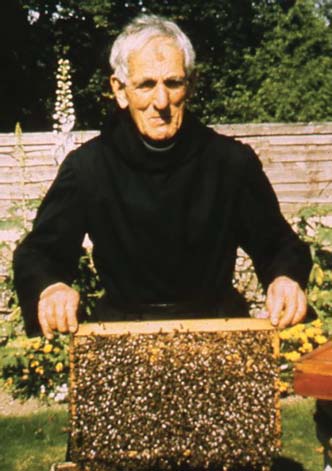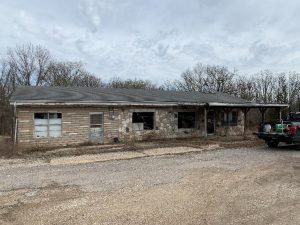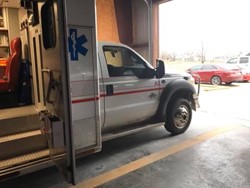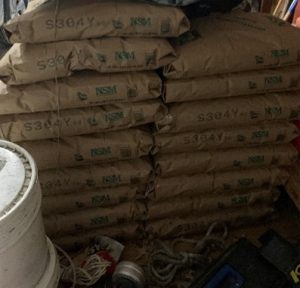By: Tina Sebestyen
Brother Adam lived an incredible life, and contributed greatly to beekeeping in several ways, but most of all in creating a line of bees with traits that he selected, and he proved that those traits could remain stable within that line. We all hear about Buckfast Bees all the time, and Brother Adam’s name is well-known in beekeeping lore, but what kind of person was he? What life did he live? He taught and wrote widely, and was awarded two honorary doctorates, one by Uppsala University in Sweden, and one by Exeter University in England. He was vice president of what would eventually be the International Bee Research Association. He was also made a member of the Excellent Order of the British Empire by Queen Elizabeth the II. All of that is wonderful and good, but what is really interesting is the adventurous life Brother Adam lived.
He must have had an adventurous spirit combined with strong determination that we see throughout his life in the way he lived it. He joined the monastery at Buckfast when he was just 11 years old. He left his home and family in Germany to move to England, to a monastery that was largely inhabited by French monks. As Benedictines, the monks observed silence. Though the young boys weren’t required to observe silence, they also weren’t allowed to speak German, only French or English. Named Karl Kerhle at birth, the abbots renamed him Louis while he was a novitiate, and then he took the name Adam when he took the vows that would make him a Brother. From here on, we’ll call him Adam for simplicity.
The monastery had fallen to ruin since 1539 when it was closed by King Henry the VIII. Adam worked with the other boys and the monks dressing stone. Making the stones exactly the right shape and size for building use was meticulous work, and the training in attention to detail is apparent in his later work with the bees. Stone work was also arduous, and with his poor health and home-sickness, it proved too much for him, though he did enjoy it. At 16 years of age, he was reassigned to help Brother Columban with the bees, and he also helped in the kitchens, of which Br. Columban was in charge. It is easy to imagine how wonderful the bees were for this lonely boy, so far from home, living in a world of silent men. He grew to love the bees.
A mysterious disease was ravaging the country at that time. Colonies were dying everywhere, and with one in every garden, it was quite communicable. Named Isle of Wight disease for the apparent origin of the malady, it was thought to be caused by tracheal mites. There is some disagreement about the cause today1, but the fact remains that nearly all of the British Black Bees in that part of England were wiped out. 16 of the 64 colonies at Buckfast Abbey survived, those that had been crossed with Apis m. liguria, the leather colored bee from northern Italy. Adam and Brother Columban began rebuilding the apiaries, since the honey and beeswax were an important part of the self-sustaining work at Buckfast. Since all of the local bees had been wiped out, there was no choice but to import queens. They brought in both Italian queens, and Carniolan queens. They also did a great business in the sale of nucs. Soon they had 45 colonies, which made 5000 lbs. of honey that year. The following year the decision was made to sacrifice the honey crop in favor of creating more colonies from nucs.
The commercialization of the beekeeping was too hard on Br. Columban, so he retired from the apiaries to run the kitchens, and after just four years of tutelage, Brother Adam was left in charge of the bees. Though what is well-known about him is his amazing successes at bee breeding, Adam faced difficulties and failures like all of us who raise bees. One of the first things that caused trouble was a sugar shortage caused by WWI, followed by a cold spell. When a warm spell came along and sugar was available, Adam decided to feed sugar water to the bees to get them up to Winter weight. The extra water in their stores caused the bees to get severe dysentery, and all but three of the full-sized production colonies died, leaving just the nucs which had been fed only fondant. Brother Adam had to rebuild again.
Brother Adam’s religious duties were very rigorous, but he still found time to read the American Journal “Gleanings” (the original name for Bee Culture magazine) and the British Bee Journal. Some of the authors were to have a profound impact on Brother Adam’s ideas about beekeeping. Professor L. Armbruster, writing about the laws of Brother Mendel regarding bee breeding, was a great influence in Adam’s early thinking about bee breeding, and they corresponded, eventually met, and became fast friends. Samuel Simmins and F.W. Sladen were two more beekeepers who were making efforts in the field of bee breeding with the White Star line of Carniolan/Cyprian stock. Brother Adam continued his beekeeping career with an appreciation for the scientific ways he had learned and read about, dividing his colonies into groups to try new ideas and keeping a control group. His reading and experience with cross-genetic survivor bees led him to begin his lifelong bee breeding ventures.
With his colony numbers growing, Brother Adam was very motivated to standardize his beekeeping equipment. The hives at Buckfast were in several different styles and sizes of hive bodies, making beekeeping difficult. The hives in common use across England were the Burgess Perfection, which would hold 10 British Standard frames in the brood box. Brother Adam thought this was inadequate for the prolific Ligurian queens he was importing, and so tried using double brood boxes on one colony. It produced six supers of honey, more than any other colony in the apiary. Other beekeepers were moving to the 10 frame Langstroth hive, but Adam felt this was still too small. Again, an article in the journal Gleanings would give the inspiration needed. He bought the first six modified Dadant hives to be imported to England. This is a 20” x 20” x 12” hive body which holds 12 frames. This provides 2,050 sq. inches compared to 2,126 sq. inches in a double British Standard hive body, and without the time-consuming separating of two brood boxes. For comparison, double Langstroth brood boxes have 2,742 sq. inches, so the single modified Dadant effectively limits the amount of brood needing to be fed while still providing a large work force. He also felt that the space between frames in the upper and lower hive bodies was a barrier to the bees, and slowed their progress. In 1924 he decided to move half of the colonies in each apiary to the new modified Dadant hive. It was a poor honey year, but 1925 was much better, and with 40 colonies in each of three outyards, it was a good test of the new hive design. The Dadant hives produced 335 lbs of surplus honey each, compared to the best British Standard with only 224 lbs. Brother Adam was a hard-working man, either assembling or making from scratch the materials he needed, often with the nails from the boxes groceries arrived in.
It is easy to see how the survival of the black bee when combined with the Ligurian bee would get him interested in the possibility of better genetics. And the ideas planted by what he was reading motivated him to try to improve the stock at Buckfast. He realized that he needed an isolated mating yard, and with the cooperation of the Devon Beekeepers Association and their agreement to give him a five mile radius, he found just such a place on the harsh and wind-swept Dartmoor which has few natural homes for bees. There was poor understanding of the mating of honey bee queens, but he knew he needed to pay as much attention to the drone producing colonies as he did to his queen mothers. In the spring of 1932, he and Father Benedict left early in the morning one day, to transport 200 mating nucs to Sherbeton on Dartmoor. On arrival, they decided to let the bees rest a minute in the van while they enjoyed their morning cup of tea in the sunshine. Somehow, the van caught fire with the nucs inside, and though they raced to it as quickly as they could, it was too late. An entire year’s work was lost.
Also about this time, Brother Adam was using inverted tins to feed sugar syrup to the bees. However, early morning temperature shifts could cause the vacuum in the tins to be lost and all the liquid to drain out on the bees. Winds could also blow the tins around once they began to lighten. This prompted Brother Adam to invent and patent his own style of hive top feeder. He built them for all of the hives, which were now so numerous that he also had to build a new mixing tank for the syrup that would hold 15 tons of sugar at once. He mixed it in cold water using a 16” wide paddle in about 15 minutes, then pumped into vats in the waiting van for transport to the apiaries.
Big changes needed to be made to the extracting and bottling facilities as well. In 1921, Adam had 160 colonies which produced nine tons of clover honey, and all of the supers had to be hand carried up a winding flight of stairs to the honey processing room where a new hand-cranked extractor, a big improvement over the old two-framer, kept him busy late into the nights. Another challenge that needed to be addressed was the handling of the heather honey. This honey, like Manuka honey from New Zealand, is thixotropic, meaning that is gelatinous and as such, it could not be extracted by centrifugal force alone2, but had to be warmed and pressed from the comb with great weight. He formulated plans, had them drawn by a draughtsman, and a prototype built. After a few modifications, a new press was made that accepted a stack of 10 combs, steam-heated and pressed them to a ½ inch thick wafer of wax. They could now process two tons of heather honey per day. Adam built 11 storage tanks that would hold 27.5 tons of honey, with pipework for warming the honey for bottling.
Of course, he wasn’t working alone. Other men from the monastery helped, but Adam was right there in the thick of it. He not only worked at keeping the bees, doing the work on the facilities, processing the honey, and raising 500 queens for sale each year, he still helped out in the kitchens, and was involved in planting flowers for the bees. One year he raised 2500 begonias from seed, and then selected the best dozen plants to propagate from.
Between so much work and so little sleep, and the death of his father, it should not be surprising that Brother Adam fell ill in the winter of 1932. He was 34 years old. He spent three months at home in Germany with his mother, and returned in the spring to take up the care of his bees. Early in the year of 1939, he went home again to care for his mother who was ill. Nazi indoctrination was everywhere, and he feared for her and for Germany. That same winter, he fell ill again, and was diagnosed with a heart disorder caused by over-work. He was told never to work again. He tried to slow down for a while, and spent just a half hour each day overseeing the work on the honey house. It was completed in 1940, and he could be content.
He spent a Winter convalescing and reading, and emerged in the Spring excited about seeking new and better genetics to improve his bees at Buckfast, but the war was on, and the timing wasn’t right. With so many of the inhabitants of the monastery being German, honey production was critical to good public relations. Finally, after the war, on March 20th, 1950, he set out alone in his Austin A40 equipped with smoker, veil, and sample collection supplies. He was seeking pure strains of bees, that seemed not to have crossed with outside genetic influences, but at first had a hard time finding what he considered pure strains. He also visited universities and beekeeping scientists along the way. He stayed at monasteries as he traveled, looking for bees with characteristics that he thought would contribute well. It seems as though he drove through the countryside, looking for beehives. He would pull in and look for the owners, inspect their colonies, and convince them to give him their queens. This early trip was much different than his later ones, when he was better known, when he stayed with well-known scientists and beekeepers, and followed more organized itineraries.
As he found what he considered pure strains of bees, he would collect samples, boil the bees to kill them, then preserve them in alcohol and ship them to a laboratory for morphometric study.. He built an amazing collection of more than 1300 honey bee samples that today would no longer be available for study, due to hybridization. He also sought queens that he could ship home to his assistant where they would be installed in nucs awaiting his arrival and crossing into his line of bees. He had permission from the government to write his own health certificates that allowed the importation of stock.
He traveled throughout Europe, Asia Minor (like Turkey and Yugoslavia), and even into the oases of the Sahara desert. Mostly things went well, but sometimes disaster struck. He slid off icy roads, and once over-turned his car, suffering only a cut ear and a broken windshield. He successfully found the coal black Tellian bee, Apis millifera intermissa which he thought was a primary race of bees from which others had descended. Upon returning to Algiers, he took a very rough weeklong boat trip to Israel, during which he was seasick and mostly confined to his quarters by the anti-religious sentiment of his fellow travelers. He arrived in Israel on the Thursday of Holy Week, and with the hospitality of a kibbutz, was allowed to celebrate Passover with them. He loved it, and felt at home and comfortable. One time in Italy, disaster struck. He carefully packaged the precious queens for shipping, and left them on the table in his room overnight. In the morning he was horrified to find the table and queen cages covered in tiny black ants. Every single one of the queens was dead! It was too late in the year for him to retrace his steps, and with heavy heart he returned to Buckfast to commence the honey harvest.
In 1987, at the age of 89, Brother Adam undertook one last trip to the rain forest in Tanzania near Kilimanjaro, and Mount Kenya in Africa. He was seeking the reportedly more passive Africa bee, Apis m. monticola. He was accompanied by his friend Herr Fehrenbach, his daughter who was a doctor, Michael Van Der See from Holland, Walter Davie, bee diseases officer with the ministry of Ag, the author of his biography, and a film crew. Brother Adam fell and cut his head open when he arrived, and that set things off badly. There were fewer colonies to inspect than had been hoped, and the first one was incredibly aggressive. The heat and altitude combined to sap Adam’s energy. His beekeeper friends actually carried him in a wicker chair one day, but finally convinced him that discretion was the better part of valor. The group with him was able to find a few queens that he wanted to try combining into his bee line. After all of this struggle, though, the queens didn’t live to make it home to Buckfast. Although disappointing in some respects, the trip was also a good learning experience. He had only one day in Kenya, but it was enough to affirm his belief that the peaceful and productive Apis monticola bee was the one he wanted to work with. This work has been followed up by a group of beekeepers who crossed the Buckfast bee with Apis monticola from the Elgon region, and so, Brother Adam’s work indirectly influenced yet another line, the Elgon bee.
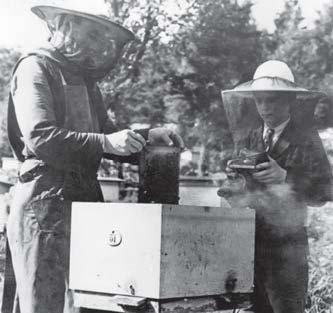
Peter Donovan was sent to Buckfast Abbey when he was 13 years old, to escape the bombing of the cities during WWII. He became Brother Adam’s indispensable beekeeping assistant. Photo credit Peter Donovan via Erik Osterlund, https://elgon.es/
Throughout most of his years of beekeeping, the Abbot at Buckfast was Dom. Leo Smith, who not only helped with the bees occasionally, but also traveled with Br. Adam as he sought out the queens to cross into his line. It had been a long and happy friendship. Father David Charlesworth became the new abbot at Buckfast, and he had a different outlook on Brother Adam’s fame. He decided that it was time for Adam to retire, and after eye surgery and difficulties with hearing and balance from Meniere’s disease, it may have been for the best, though Brother Adam was deeply hurt. According to a few people who knew him, Brother Adam did not suffer fools gladly, and may have been a little hard to get along with. Father Leo took over as head of the department, assisted by Brother Daniel and Peter Donovan, the man who had come to Buckfast as a boy of 13 during the war, and who had become indispensible in the beeyard. After retirement, Brother Adam lived for a time in his room near the honey facility, but it was too isolated, and his advancing age eventually sent him to live at a rest home. He had served his God as best he could through his bees, and went home to heaven in 1996 at the age of 98.
Across all of these travels, the adventurous spirit which had brought him to Buckfast Abbey in the first place served him well. His love of bees, his gift of observation, and interest in selection and improvement combined to help him bring a gift to the world of bees and beekeepers. Part of that gift is the collection of bees and scientific information he created. Part of it is the Buckfast Bee. And part of it is the knowledge that selecting for the best traits and creating a stable line of bees can be done. This is serving us still today in our search for mite resistance in our honey bees.
Most of the details of this article came from the biography of Brother Adam, For the Love of Bees, by Lesley Bill. She must have known him well. There are photos of her traveling with him, and inspecting colonies at Buckfast alongside him. I have been unable to contact her. It is a well-written book, and I highly recommend it.
1:“Isle of Wight Disease”; The Origin of the Myth, by L. Bill, published by the Central Assoc. of Beekeepers, Glouchester, England
2:https://www.youtube.com/watch?v=Lke7YlO4dgo Both Manuka honey and heather honey become workable after stirring, so modern equipment includes a machine that stirs the honey in each cell before the frame is sent to the extractor.




